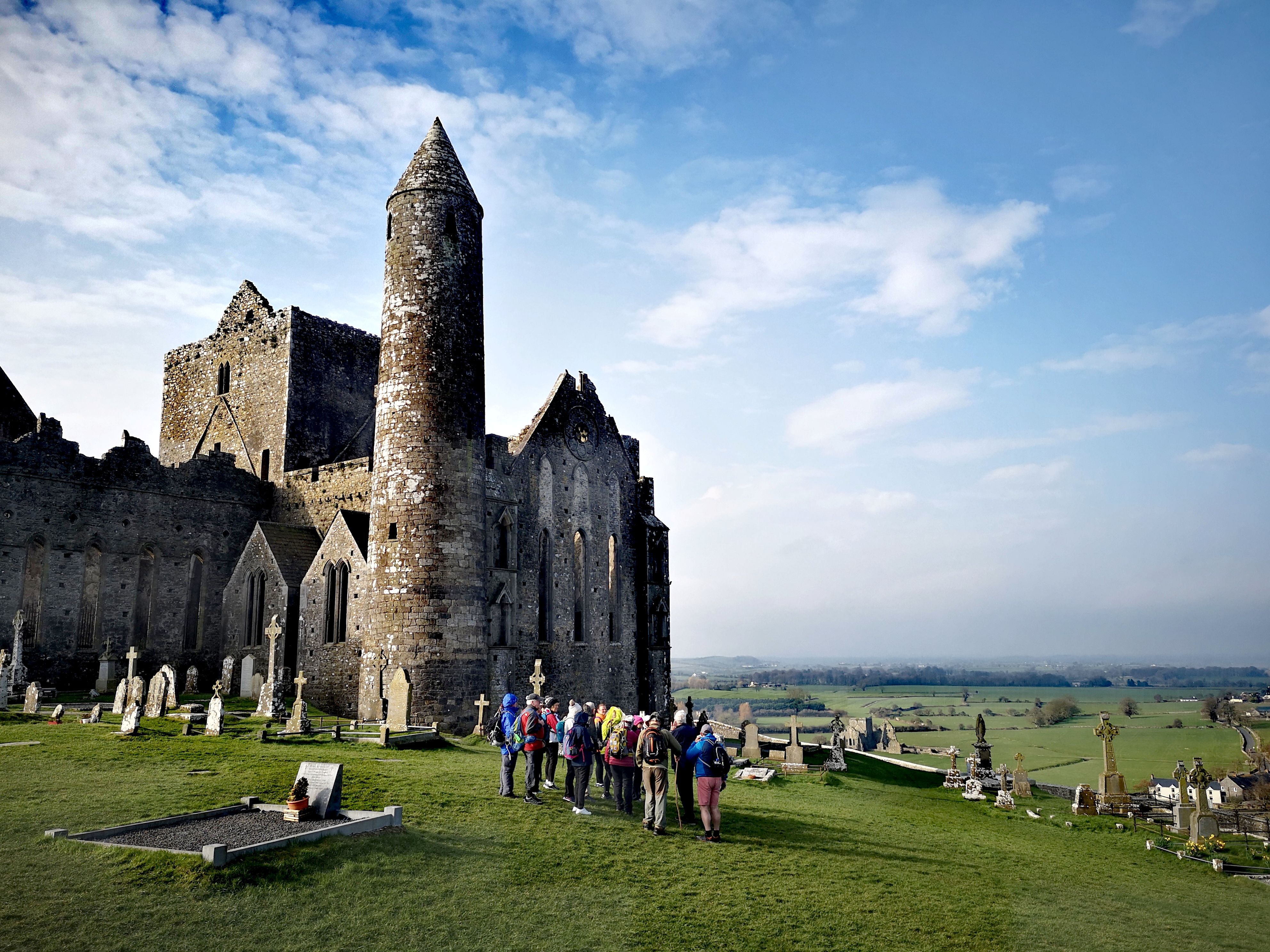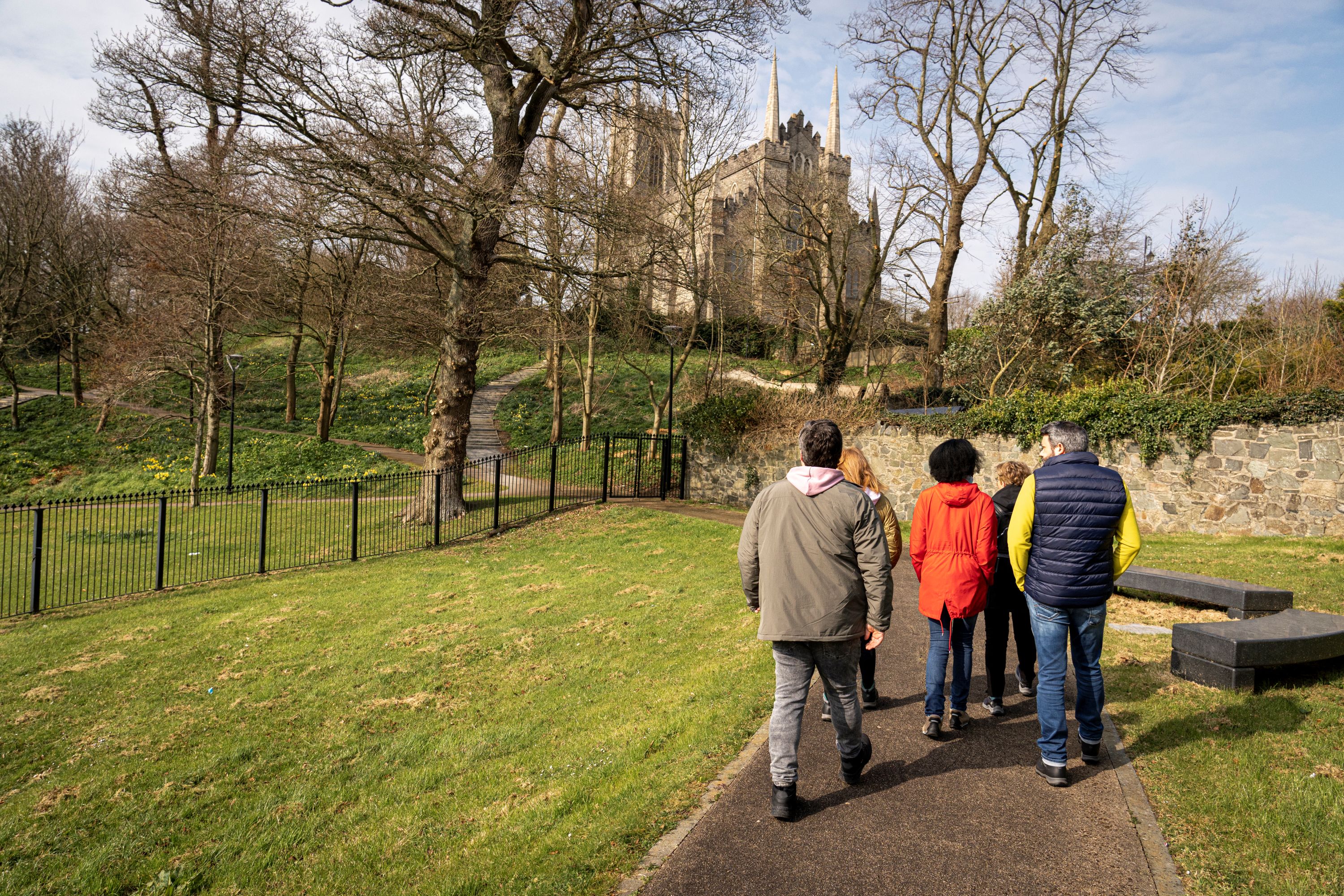Walk into Serenity Along Ireland’s Pilgrim Paths
Ireland’s pilgrim paths are powerful links to the past, to the natural world, and to the spiritual realm, offering walkers a truly transformative experience.

Croagh Patrick, Clew Bay, Co Mayo
For centuries, Ireland’s pilgrim paths were travelled by saints and sinners seeking spiritual renewal and inner peace. Winding through mountains and lush valleys, along coastal tracks and riverside trails, these ancient ways took their walkers on physical and spiritual journeys that often ended at sacred destinations.
Even before the island embraced Christianity, there were sacred routes. Among them were the five great roads (Slíthe Mór), which legend said connected the mystical Hill of Tara - the spiritual and political heart of ancient Ireland - to the rest of the country.
Today, Ireland’s pilgrim paths are being rediscovered by a new generation seeking reflection, fitness, solitude, or a deeper connection to the land. They offer routes into history and mythology and an escape from the overwhelm of modern life, whether one walks with faith or without.
Pilgrimage is increasingly seen as a form of mindful, slow travel - a response to the fast pace and screen-saturated nature of the modern world. Many walkers come seeking clarity, healing, or personal growth. Others simply wish to slow down and immerse themselves in landscapes shaped by centuries of human and spiritual history.
Across Ireland, there are many pilgrim paths to choose from, each with its own unique character. All offer a sense of solace through mindful walking and deep connection to place. Dotted along their routes are ancient ogham stones, holy wells, monastic ruins and other sacred echoes of the past. While many are associated with early Christian saints, they often overlie more ancient routes, adding an even deeper, mystical resonance to the experience.
One of the most iconic is the 35km Tóchar Phádraig in County Mayo, running from historic Ballintubber Abbey to Croagh Patrick — the mountain famously linked to St Patrick, but which was a sacred site long before his time. Myth connects it to the Celtic harvest god Lugh and suggests it may once have been a site for Lughnasadh festivals — ancient pilgrimages of assembly and feasting. The Tóchar follows an old chariot road through varied terrain, past ruins and hallowed sites like the Well of Stringle, where St Patrick is said to have performed baptisms, and Creggaun ‘a Damhsa (The Knoll of Dancing), where fairies are said to gather and dance.

Rock of Cashel, St Declan's Way, Co Tipperary
Known as Ireland’s Camino, St Declan's Way stretches 115km from Cashel in County Tipperary to the coastal village of Ardmore in Waterford. This route has drawn pilgrims since the fifth century, when Declan travelled to meet St Patrick. Running alongside rivers, over mountains and through pastoral farmland, the trail passes early Christian ruins, sleepy villages, and significant heritage sites. Ardmore — where the trail ends — is thought to be Ireland’s oldest Christian settlement and remains one of its most picturesque coastal towns.
Another major route associated with Ireland’s patron saint is St Patrick’s Way: The Pilgrims’ Walk, a signposted trail linking key sites in the saint’s life across counties Down and Armagh. Beginning at Navan Fort — the ancient seat of Ulster’s kings — it continues through the ecclesiastical city of Armagh, across the Mourne Mountains, and through the seaside town of Newcastle and the Murlough Bay Nature Reserve, before ending at Downpatrick, believed to be the saint’s final resting place.

Saint Patrick's Way Camino, Down Cathedral, Downpatrick, Co. Down
Those keen to visit Ireland’s most revered sacred sites — including Lough Derg, Croagh Patrick, and Downpatrick — will find the pilgrim paths a reflective, immersive way to connect them. Walkers can also collect stamps in a Pilgrim Passport — a memento of their journey and a symbol of their achievement.
The quiet revival of pilgrimage reflects wider trends in wellness and meaningful travel. Ancient trails once walked by saints are now cared for by local communities and walked anew by those seeking authenticity, escape, and connection in a post-digital, post-pandemic world.
Throughout history, pilgrimage has had a profound impact on those who walk. Modern pilgrims may not all be seeking a religious awakening, but Ireland’s tranquil pilgrim paths offer everyone space to disconnect from daily pressures, step into nature, and simply walk into serenity.
